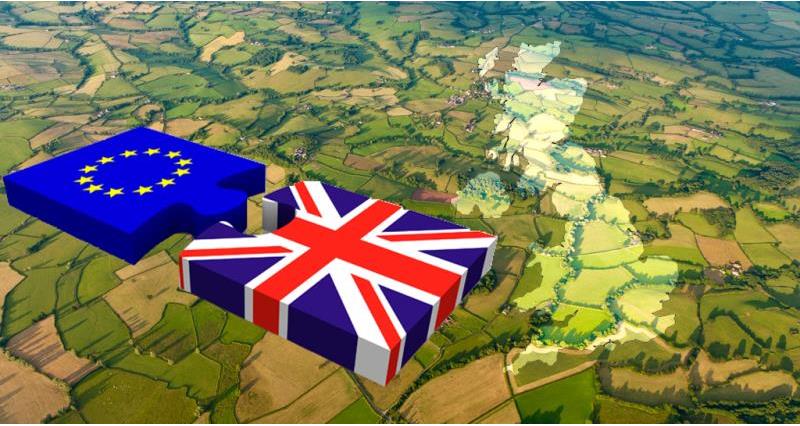The headlines
The conclusion of Phase I was always dependent on agreement on three initial separation issues. The EU insisted that these needed to largely be dealt with before talks could move to Phase II to cover a future UK-EU relationship and a transition period in between. What has been agreed on the separation issues is contained in a “Joint Report” delivered by the UK and EU negotiating teams. Below is a breakdown of the agreements:
- Citizens’ rights: EU nationals living in the UK and UK nationals living in the EU will have all their current rights guaranteed post Brexit. This covers rights relating to healthcare and employment for example. The European Court of Justice (ECJ) will still have a role beyond Brexit in judging if these rights are being duly protected in the UK.
For farming the main outcome here is an increased level of certainty for any EU nationals that businesses employ. This may help with retention of valuable staff both on-farm and through the entire food chain.
- The Irish border: it has been agreed that arrangements for any potential border will be dealt with fully in Phase II. However, the UK has agreed that, if solutions are not found, it will continue with “full alignment” of its regulations with EU rules so that, in theory, no border checks would be necessary for goods that move between the North and South of Ireland post-Brexit.
For farming the consequences of full alignment with EU rules being enforced post-Brexit are potentially complex and quite unclear. On the one hand, it is clear that if put into practice it would have significant impacts on how rules for UK farmers could change or not in the future. On the other hand, it could also protect the valuable trade of goods between Northern Ireland and the Republic of Ireland, a significant proportion of which are agri-food.
- The Financial Settlement: this is the money that the UK has agreed to pay the EU when it leaves. It is made up of budgetary commitments it made while it was a member that cover a wide variety of projects and programmes. The UK and EU have agreed a formula to calculate this amount rather than specific figure and that it will be paid in instalments instead of a lump sum.
For farming there is little direct impact. However, as the UK will still be making payments to the EU for many years to come, these will inevitably feature to some degree in spending decisions made by the UK government in the future.
A peek behind the headlines
The detail of the agreement on the three above issues runs over 15 pages. As ever this is where the “devil” lies and there are a few aspects worth briefly highlighting that matter for agriculture:
“Nothing is agreed until everything is agreed”
This ultimate caveat is right at the beginning of the document and the meaning of it is exactly as it sounds: the agreements listed above only apply if an entire Withdrawal Agreement, covering the Phase II issues of trade and transition, is agreed as well. The part of the deal covering agri-food trade falls into the second phase so disagreements over this, as with any economic sector, have the potential to upset the entire agreement.
Full alignment of regulations
While in theory this may never come into force, as described in the Joint Report, it does provide a strong hint at what is required to avoid a physical border on the island of Ireland. The idea is that with rules staying the same in Northern Ireland and the UK, there would be no need to check goods as they crossed into the Republic of Ireland. If satisfactorily enforced, this should protect valuable trade. However, there is no actual definition of what this would mean in practice. The Prime Minister and other UK politicians have stressed that this does not mean directly copying EU rules indefinitely into the future. Instead they suggest it means “sharing the same policy goals even if we achieve them by different means.” While this would indicate a degree of flexibility in how the UK may change rules regarding pesticide use for example, it is obvious that the EU would have to be satisfied with this, too. It is clear that interpretation of this concept will need to be clarified, will likely be difficult and have implications for how farms operate all over the UK.
A new Agricultural Policy?
The Joint Report states that the UK will continue to participate in programmes financed by the EU budget agreed for 2014-2020. The CAP is among these programmes, but there is a note that the Direct Payments (known as the BPS in England) foreseen in the scheme year of 2020 is not funded by the current budget period. The implication is that the last year the BPS will need to be fully applied (inspected / audited / administered etc) as it is now is for BPS2019. Potentially, therefore, the UK could introduce a modified or even brand new agricultural policy to start in 2020. However, the largest impact on the ability and flexibility of the UK to craft a new agricultural policy will be the terms of the transitional period. The EU already has a view on this contained in the new negotiating guidelines – more on this below.
A more detailed briefing on the implications of the Joint Report and covering more areas is available for members here. (You will be asked to log in).
Future headlines
The delivery of the Joint Report has provided the basis for the European Commission to recommend to the EU 27 that “sufficient progress” has been made. In turn this has allowed the EU 27 to adopt new negotiating guidelines that outline what should be the Commission’s approach and what talks should cover in Phase II. For a breakdown of these and what they may mean for farming please read the second article here.
